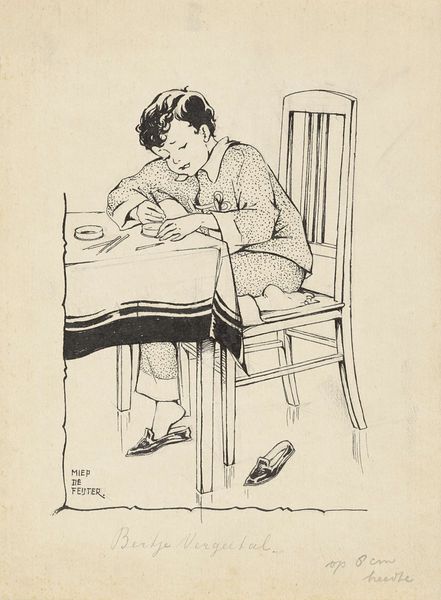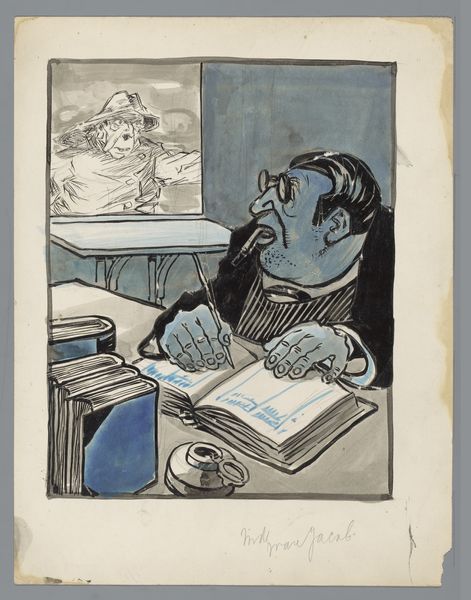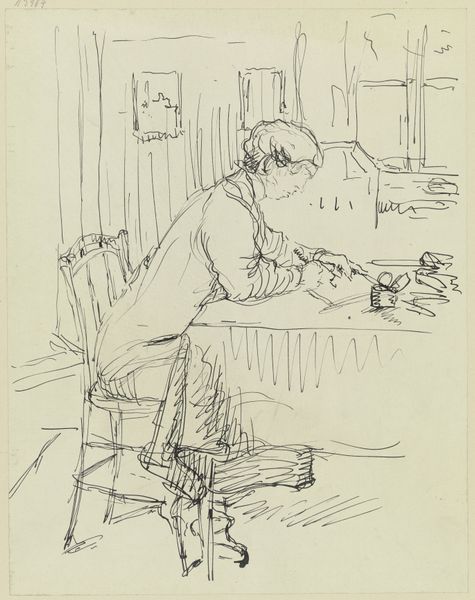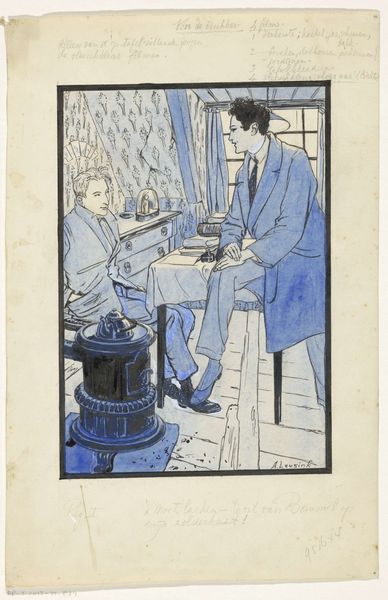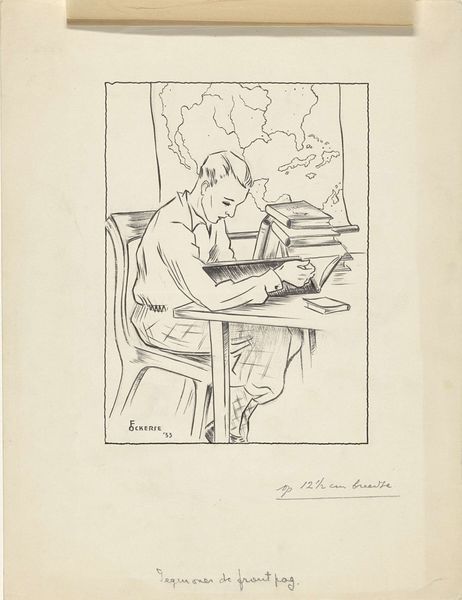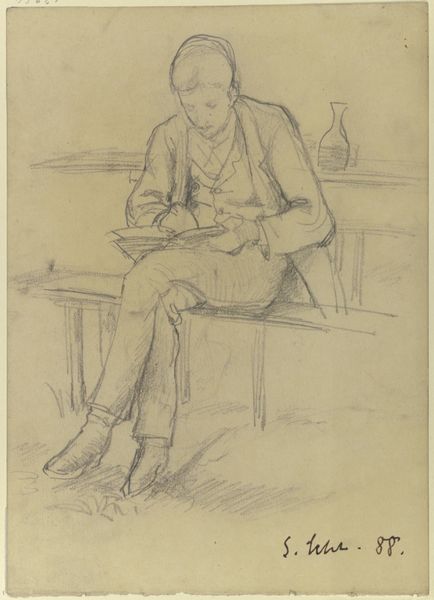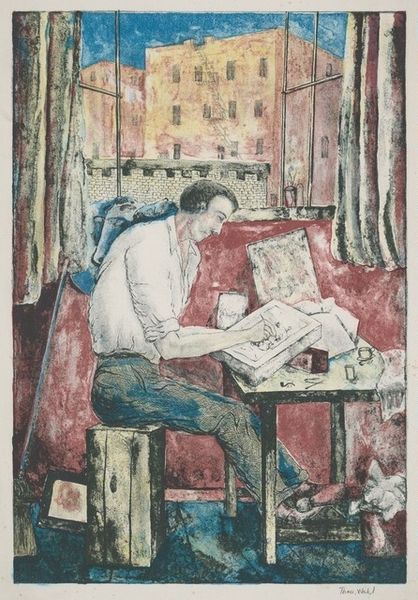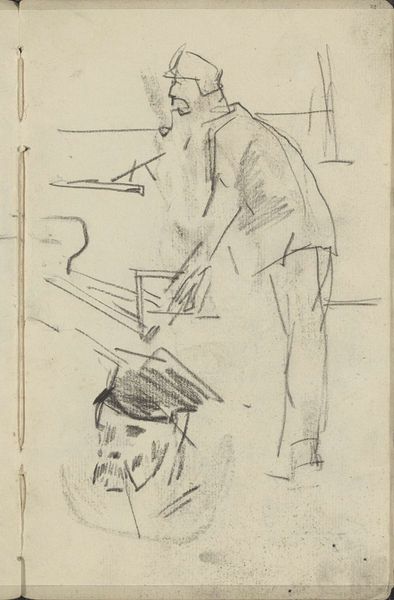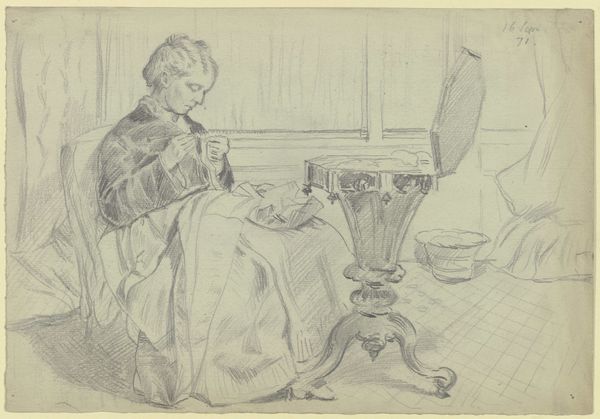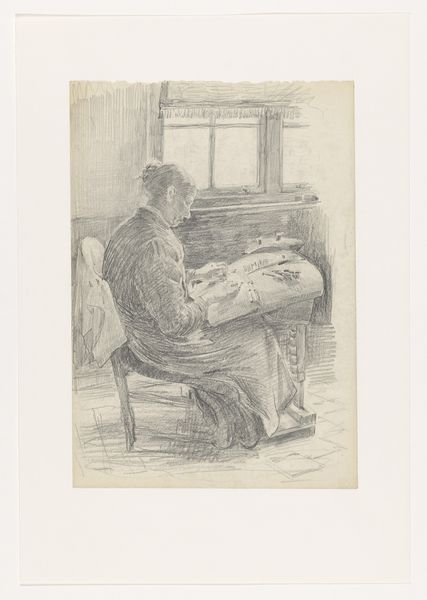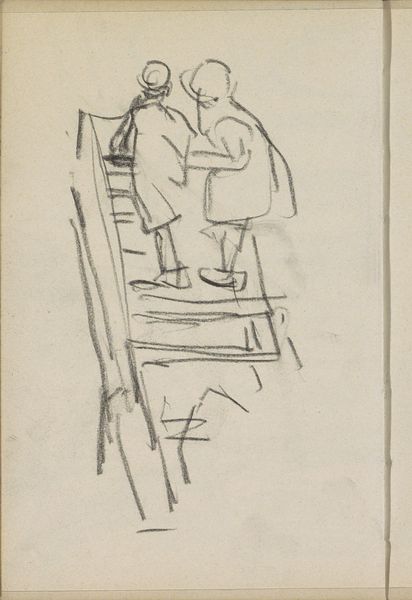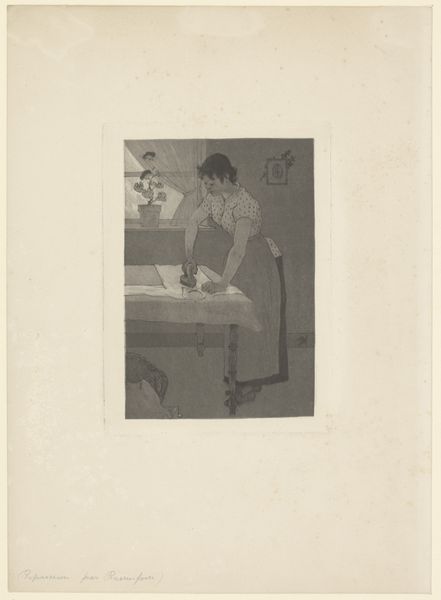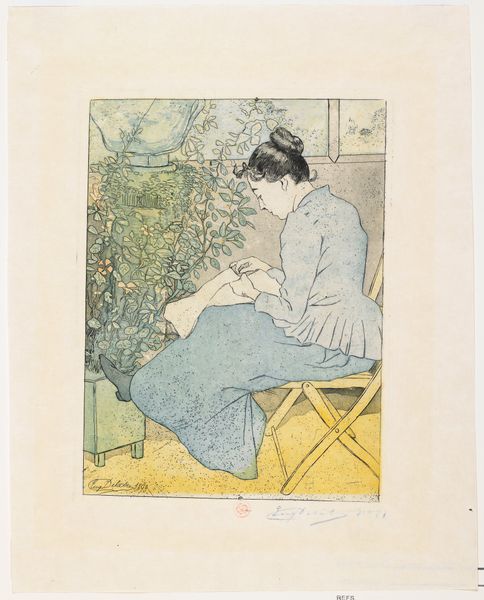
drawing, paper, ink, pen
#
drawing
#
narrative-art
#
dutch-golden-age
#
paper
#
ink
#
pen
#
genre-painting
#
realism
Dimensions: height 337 mm, width 201 mm
Copyright: Rijks Museum: Open Domain
Curator: The mood is distinctly somber, don't you think? Something about the hunched figure and the muted tones suggests a sense of quiet determination mixed with melancholy. Editor: Indeed. This drawing, made before 1926 by Anny Leusink, is called "Jan maakt huiswerk aan een tafel"–Jan Doing Homework at a Table. It’s pen and ink on paper, capturing a seemingly simple domestic scene, but one that’s rich with cultural and social implications if we consider it in the context of genre painting and Dutch Golden Age traditions. Curator: Homework, the universal Sisyphean task. Even in this bygone era, the grind doesn't change much, does it? Although, maybe without the pressure of grades hanging so heavily… I wonder if Jan dreamt of being a painter. Editor: Well, let's delve into the narrative a bit deeper. This isn’t just about a kid doing his homework. Consider the era, the limited opportunities, and the implied social pressure to succeed academically as a means of social mobility. The lone figure illuminated by the stark light bulb feels isolated, burdened, almost. Curator: Right, I see that—like the entire weight of the world, or at least his family’s expectations, rests on his young shoulders. The detail that sticks out for me is the cat by his chair. It’s such a realistic touch—cats being cats, present yet aloof, adding an element of quiet observation to Jan's concentrated effort. Editor: Exactly. It creates an intimate triangle—student, work, and observing animal—each element imbued with different levels of consciousness. The realism speaks volumes about Leusink's intent. It suggests a conscious effort to ground this drawing within the ordinary, yet finding meaning in the everyday struggles. Consider the power dynamics present, too: who is allowed education, at what cost, and for what purpose? These details invite a deeper consideration. Curator: It’s fascinating how a simple drawing can open up such vast conversations, not only about art history but the intersectional aspects of class, access, and societal pressure. The dedication it embodies, though… is he finding his own form of liberation? It feels like a snapshot of a specific boy’s life, but it resonates universally. Editor: Yes, absolutely. It's in these humble, seemingly mundane scenes where we often find the richest material for exploring complex ideas about who we are as individuals within society. Thanks for joining me. Curator: My pleasure!
Comments
No comments
Be the first to comment and join the conversation on the ultimate creative platform.
